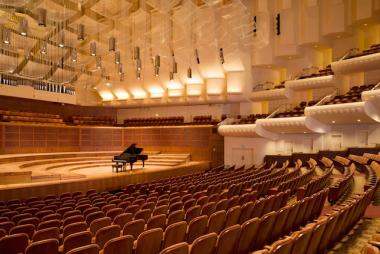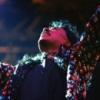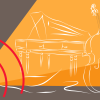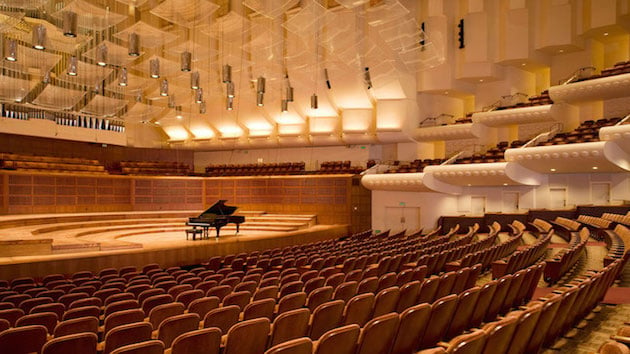
Music critic Barbara Jepson calls attention to an unexpected development in the wake of the virus-quarantined closure of concert halls and opera houses: a veritable explosion of music all around.
The huge numbers reported in watching and listening to streaming performances are in stark contrast with “decades of dire warnings and disheartening statistics about shrinking classical audiences — because of aging patrons, changing tastes, and more competition for the entertainment dollar.”
What explains the contrast, asks Jepson in The Wall Street Journal article, “The Unstoppable Power of Music”:
Do these recent, higher numbers mean there’s a larger, untapped audience for classical music than we usually think?
Or does the enthusiastic response to these classical webcasts merely reflect the chance to hear free concerts in the privacy of our homes, without the usual scheduling issues, transportation hassles, and total expenses involved?
We can’t know for sure. But one thing is clear: music is engaging more people right now than most other art forms.
The statistics are unequivocal:
— The Metropolitan Opera’s first free “Nightly Opera Streams” offering of Carmen crashed the site due to the unprecedented demand; rebroadcasts attracted about 7.9 million viewers worldwide.
— The Seattle Symphony streamed Mahler’s First Symphony on two evenings; 132,000 listeners tuned in, compared with 4,835 individuals who had purchased tickets for one of the three original live concerts.
— Not every opera fan’s favorite, pop tenor Andrea Bocelli’s Easter recital of sacred-music favorites drew more than 2.8 million concurrent viewers, making it the largest simultaneous audience for a classical livestream in YouTube history. The latest count on the video is nearly 40 million.
Locally, there are also impressive figures. San Francisco Ballet, first victim of the War Memorial closure on March 7 (the company forced to cancel the entire season subsequently) has these statistics for the past two months, up to last week:
— The weekly SF Ballet @ Home streams of complete performances have received 333,000 cumulative views. The first video, produced with amazing speed, was exactly the Balanchine Midsummer Night’s Dream whose revival premiered in the War Memorial, which was shuttered by the city the next day. This week, it’s Christopher Wheeldon’s Bound To from SF Ballet’s Unbound Festival.
— Social channels (not including YouTube) have received around 458,000 interactions or engagements since mid-March, a 22% increase from the previous two months.
— Some 80 pieces of content works created in the quarantine have gotten nearly 1.1 million views digitally.
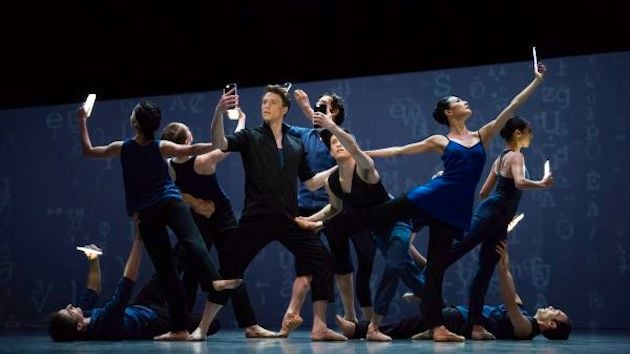
There are enormous practical and emotional issues involved in the jarring switch from live music to online experience only. Losses for artists and audiences are obvious but, as Jepson writes: “One day we will gather once more in the world’s concert halls to the heartening sounds of live performance. Until then, I’m grateful for the opportunity to experience such a wealth of classical music communally via online videos, livestreams and rebroadcasts. Sheltering in place, we can still journey into a composer’s world, briefly leaving this one behind.”
One prominent reason for the emergence of “wealth of classical music communally” is the consoling, redeeming power of music, so clearly present in Bach oratorios, Wagner operas, the Mozart and Verdi Requiems, and so on.
The sense of redemption is especially important at times of danger, grief, and mourning — all present in the ravages of COVID-19. In one of the pandemic’s present hot spots, New York City, it was music that helped shell-shocked people near ground zero of 9/11.
“When words fail, music can help us speak,” writes Jepson, citing the New York Philharmonic’s post-attack performance of the Brahms German Requiem under the direction of Kurt Masur (himself a witness to tragic events in Germany, emerging as a hero after the war).
Even with the concert broadcast nationally by PBS on Live From Lincoln Center, a large crowd stood in the rain during the performance outside the hall, watching the video projected in the plaza and listening to the music addressing collective grief.
Beginning on Memorial Day, May 25, that 2001 concert is being rebroadcast on YouTube.
In San Francisco, we too had our musical consolation, just one day after 9/11, at a Davies Hall event whose very realization was a statement of determination.
Beginning well before 2001, there were preparations for Michael Tilson Thomas’s ambitious Mahler Project, to record all symphonies. Weeks of musical and technical rehearsals led up to the first performance to be recorded. It was to be the Sixth Symphony; the scheduled date: Sept. 12, 2001.
All around the country events were canceled after 9/11, and there was a debate here if the concert should be postponed. The decision to go on produced an important event, one we are lucky to have forever as part of the Mahler recording set.
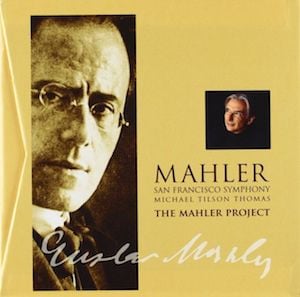
In the shock and confusion on the day after 9/11, once the sound of Mahler’s anguish reached out from the stage, there was no one among the musicians or the audience staying outside, looking in.
An instant community was born, it coalesced in experiencing the pain and beauty of the Sixth. There were tears, but also a temporary closure, a tentative catharsis.
As the whole world turns to streaming by necessity, the “unstoppable power of music” is put to good use. And, where the loss of live-performance business hurts the most, statistics augur for what may well be a continued surge — second, third, and more — of giving and receiving music.
San Francisco Symphony, whose European tour and balance of the 2019-20 season were wiped out by the pandemic, is busier than ever, as reported by the orchestra’s staff, very much still at work (an accomplishment in itself):
— We saw a significant increase across key performance indicators for Facebook (134%), Twitter (361%), and YouTube (237% in views and more than 999% in subscribers) driven primarily by the #MusicConnects content and Keeping Score (both available on our YouTube channel).
— Making our Keeping Score series available for free global online streaming on YouTube helped drive a more than 999% lift in subscribers and a 237% increase in views in April. The SFS YouTube channel has surpassed 15,000 subscribers, and the Keeping Score episodes have 225,000 views to date.
— Facebook engagement has seen a 159% lift in overall Engagement since February, and reactions (i.e. “likes,” “loves,” etc.) have nearly quadrupled since March 1, 2020. In April, the SF Symphony’s Instagram account surpassed 90,000 followers, representing a 43% lift from April 2019, and a 21.89% increase since January 2020.
— Eugene Izotov’s Oblivion became our most-viewed video on the SFS Facebook page, with a reach of over 500K. This resulted in a dramatic, sustained lift in engagement (190% increase in net page likes compared to March) that has positively affected engagement with newer videos.
San Francisco Opera has been busy also, streaming complete productions from the past in the Opera Is ON series, engaged in social media, and holding online workshops.
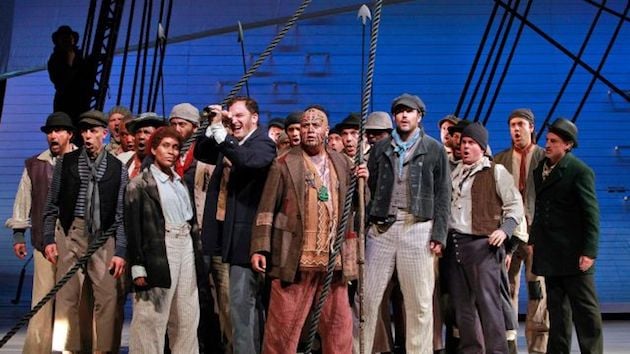
Executive Director Matthew Shilvock said the company is now “focused on mitigating the devastating impact that cancellations could have on the lives of the artists, musicians, crew members, and staff who are the heart of this company, while also maintaining a strong organization when we return to the stage.
“Arts and culture have the unique ability to provide solace, healing, connection, and joy — things we need now more than ever. While we are devastated to cancel the summer season, we remain deeply committed to sharing the cathartic power of opera through our new digital initiative Opera is ON.
“The entire company joins me in expressing profound appreciation to all of the essential and front-line workers who are saving lives, ensuring the safety of our cities and keeping our communities running. We wish everyone health, safety and an optimistic hope for the future as, together, we navigate this crisis.”
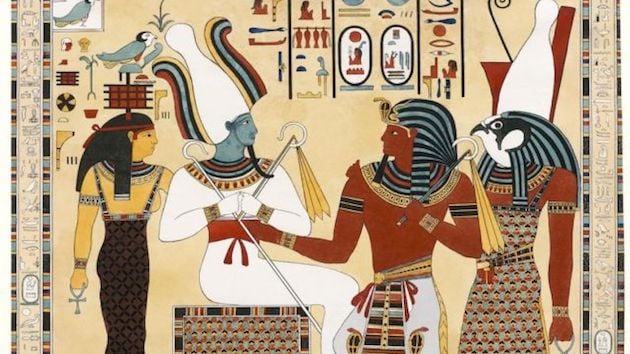
On Memorial Day, there is a poignant reminder of the role of music in healing and therapy in studies of medical-psychological treatments for veterans:
In the United States, musicians first began performing for injured soldiers during the Civil War. This tradition continued throughout World Wars I and II, and music served to entertain, motivate, stimulate, and build morale among service members.
By the end of World War II, community musicians were performing for thousands of veterans suffering war-related physical and emotional trauma, and wounded soldiers’ consistent and positive responses to music led the military to examine the usefulness of therapeutic applications of music for wounded and disabled veterans.
In 1945, the military officially integrated music into its reconditioning program, outlining orders for the use of music with military personnel and thereby marking the beginnings of the modern music therapy profession.
During the mid and late 1940s, the field of music therapy continued to advance as both advocacy for and research on the effectiveness of music therapy grew. This growth led to demand for specialized training for musicians who wanted to work in medical settings, prompting the establishment of the first music therapy academic training programs.
Streaming triumphs because music is a necessity, especially at times like this.

